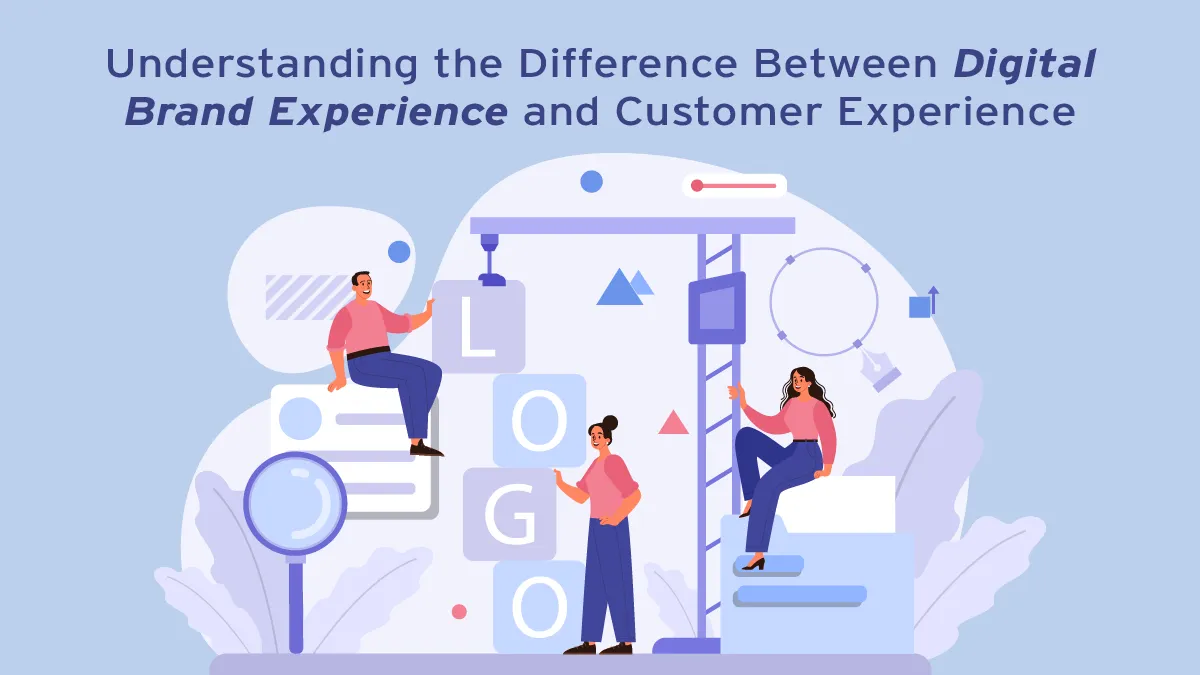36% of consumers in America purchase retail items online. They often purchase after researching products digitally. This trend underscores the necessity for brands to optimize their digital brand presence. It is essential to capture potential customers at various touchpoints.
According to a recent Forrester Consulting study commissioned by Qualtrics, only 39% of business decision-makers believe their brand resonates with prospects, highlighting a significant experience gap.
It is crucial for businesses to close this gap to craft unique experiences. With the rapid increase in the digital-first landscape, employee demands are also evolving. Hence, it is crucial for businesses to even digitize their employee experience. It is a strategic way to improve their overall brand experience.
In this blog, let us have a look at the difference between brand and customer experience. We will also explore why it is important and the best practices to digitize the brand experience.
Understanding the Difference Between Digital Brand Experience and Customer Experience

Brand experience and customer experience (CX) might sound similar in the digital world. However, they focus on different aspects of a business’s interaction with people. Brand experience is the feelings and perceptions about a brand. This applies to both customers and non-customers. In contrast, CX focuses on those who have used a product or service. It looks at their journey from initial interest to beyond the purchase.
Customer experience is specific to a buyer’s interaction with a product or service. Brand experience encompasses a broader range of factors. It covers brand identity, user satisfaction, and marketing campaigns. Brand values and reputation are also key aspects of brand experience. Essentially, brand experience represents the promise a business makes to its audience. On the other hand, CX is about delivering on that promise.
Also Read: 17 Ways to Transform Customer Experience with Generative AI
What is Brand Experience?
Digital brand experiences refer to emotional connections and perceptions that an individual or audience develops about a brand. This can be influenced by a variety of touchpoints. Marketing efforts, advertising campaigns, and media presence are key touchpoints to craft unique experiences. Interactions with sales teams and customer support can also influence the individual’s perception and increase brand awareness. It’s the lasting impression that gets built from every encounter with the brand.
What is Customer Experience?
Customer experience focuses specifically on a customer’s journey with a brand. The journey starts from the moment potential customers discover a product or service. It also continues through the purchase, and even in the after-sales phase. Following are the aspects that are included in CX
- How well does the brand meet the client’s expectations?
- How smooth are the customer interactions with the company’s team at every stage?
This is crucial to shaping a customer’s loyalty and satisfaction with the brand.
Why it is Important?
A strong brand experience can often be the deciding factor. It defines whether a customer chooses your brand or opts for a competitor. Hence, many businesses invest significant effort into creating memorable and engaging experiences.
Given below are the reasons why brand experience plays a crucial role:
- Building connections with your audience
- Inspiring them to take action
- Driving desired results
However, in digital spaces creating a consistent brand experience is as important as making it exciting. Consistency is the backbone of brand interactions. It helps to build lasting customer relationships and boost brand recognition. The world’s most successful brands understand that maintaining consistency is key. Consistency strengthens their brand reputation and fosters trust.
Some companies fail by focusing too much on a few great moments. They neglect the need for consistency. Others focus solely on being consistent without ever delivering anything fresh or exciting. The best approach lies in striking a perfect balance between both. It is about combining consistency with creativity. This approach helps to offer a truly exceptional brand experience.
How to Improve Your Digital Brand Experience?

Improving your digital experience is essential for standing out in a competitive market. It helps to retain customers. A seamless digital experience increases user satisfaction and builds customer loyalty. Here are some strategies to elevate your digital experience:
1. Research Your Audience
To create a brand experience; the first step is to understand your audience. Conduct regular market research and analyze customer data. Gather insights to uncover your audience’s preferences and pain points. Use this information to fine-tune your digital offerings, content, and messaging. It helps to create a stronger connection with your target audience.
2. Leverage External Resources
Utilize tools like Digital Asset Management (DAM) software to optimize your content management. DAM systems help organize, store, and distribute your digital assets, ensuring consistent and efficient content delivery across multiple channels.
3. Deliver a Personalized Experience
Leverage the insights gathered from your audience research. Use these insights to implement personalized messaging, recommendations, and user interfaces.
Personalization helps cater to individual preferences. It fosters a deeper connection with users and increases their engagement with your brand.
4. Ensure a User-Friendly Design
A great digital experience starts with a user-friendly design. Focus on creating intuitive navigation, a clear layout, responsive design elements, and visually appealing interfaces. Simplify processes to make the user experiences as smooth and seamless as possible.
5. Implement User Feedback
Regularly seek and use user feedback to improve your digital brand strategy. Employ surveys, feedback forms, reviews, and direct talks to gather insights. This feedback will inform your decisions and enhance your strategy.
By following these strategies, you can create a digital brand experience that not only meets your audience’s needs but also helps your business thrive in a competitive landscape.
Crafting and Delivering the Best Digital Brand Experience
A relevant brand experience can make all the difference in developing long-term client relationships. By determining where existing efforts fail, focusing on improvement areas, and monitoring engagement metrics along the way, it is possible to develop and deliver a brand experience that fosters customer engagement and promotes long-term loyalty.


Comments are closed.